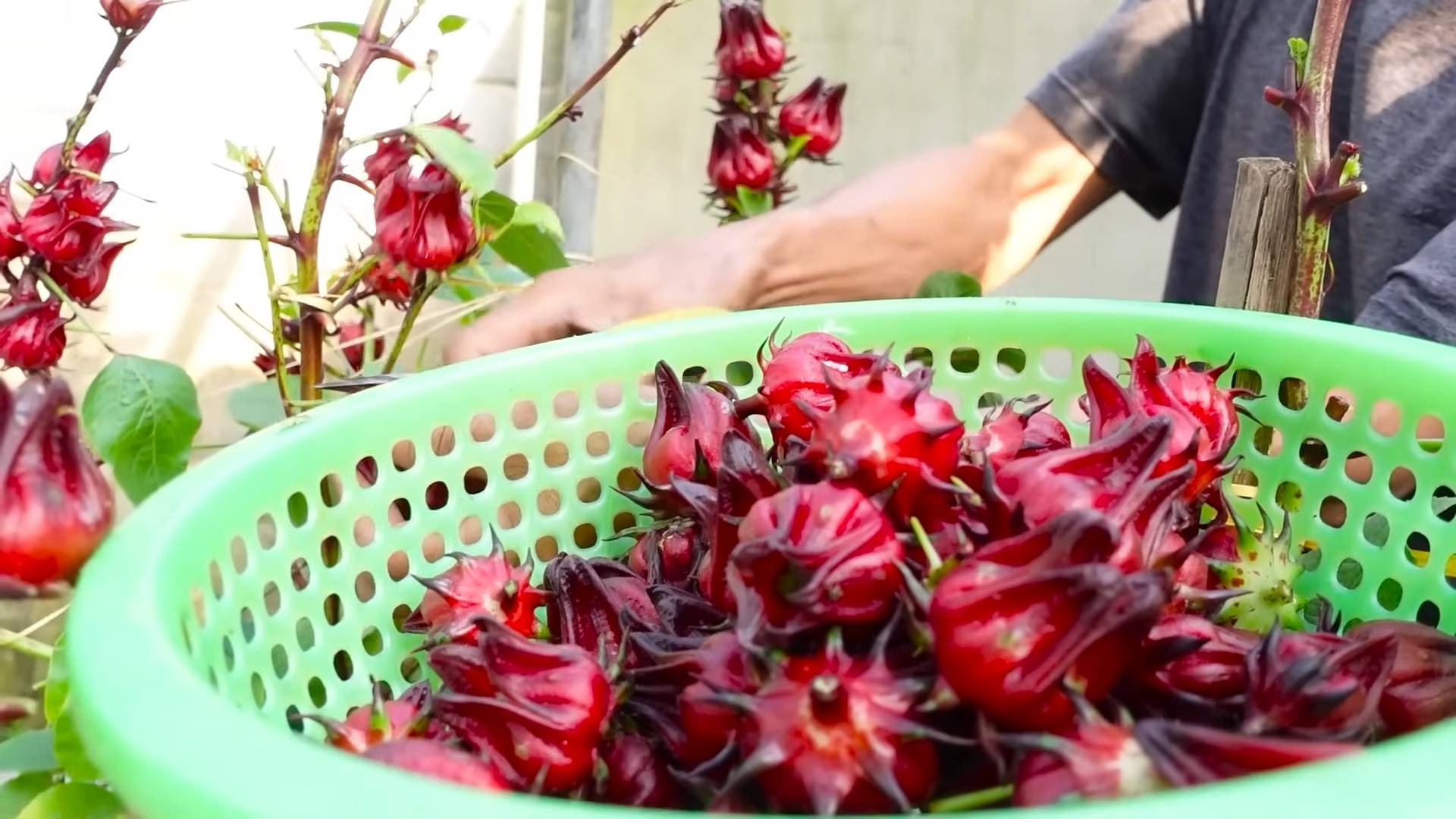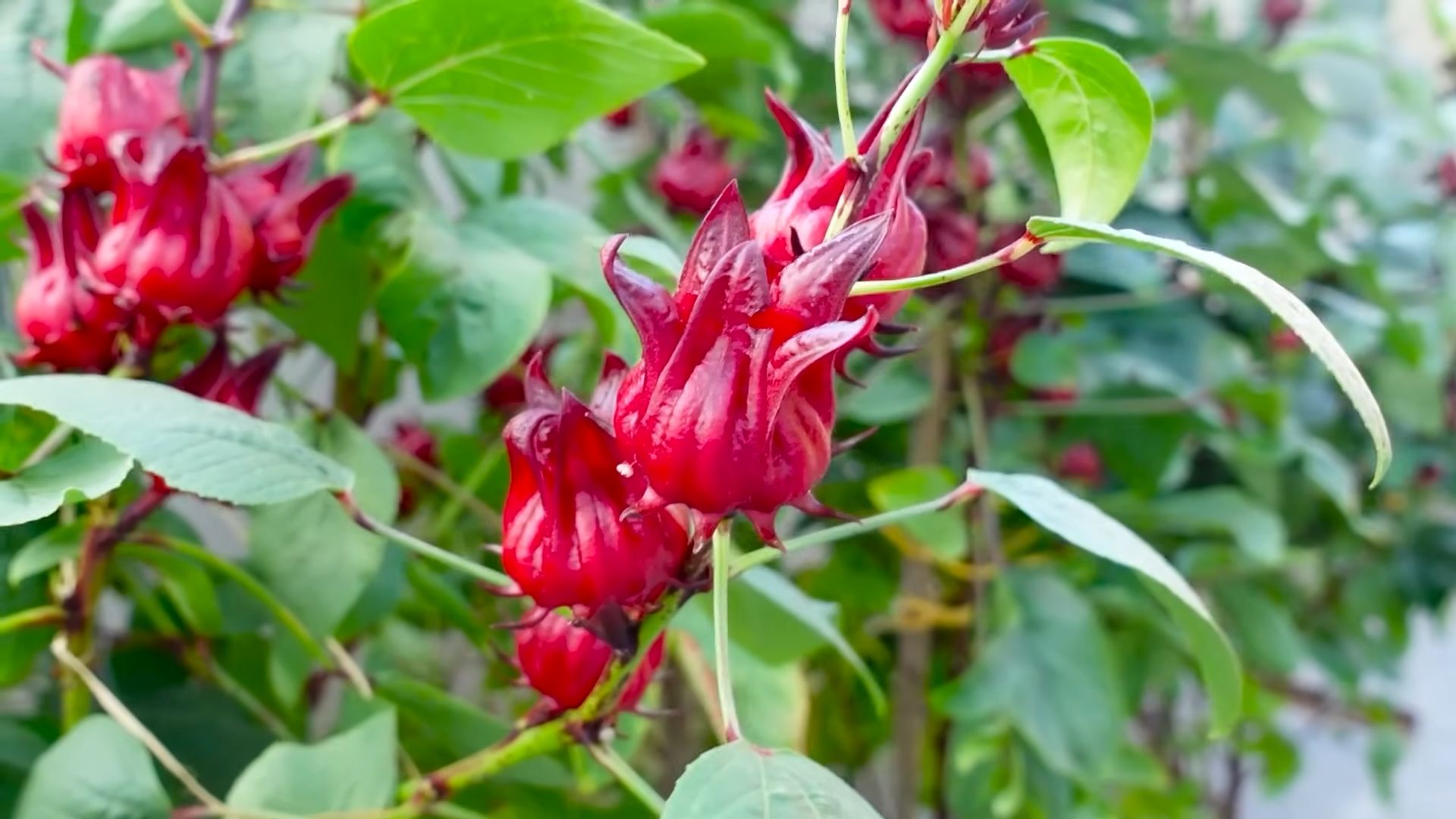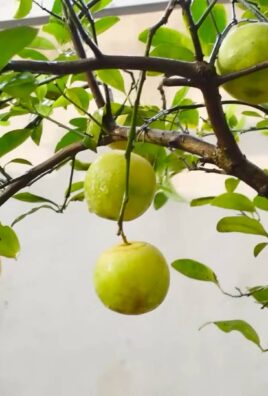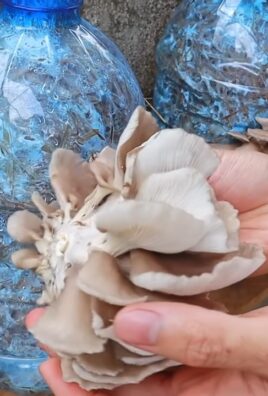Grow Hibiscus Indoors and bring a touch of the tropics to your home! Have you ever dreamt of waking up to the vibrant colors of a hibiscus flower, even when the snow is falling outside? Well, dream no more! This DIY guide is your passport to cultivating these stunning blooms within the cozy confines of your own living space.
Hibiscus flowers have captivated hearts for centuries, holding deep cultural significance in many societies. From being symbols of delicate beauty in Hawaii to representing fleeting glory in Victorian England, these blossoms carry a rich history. But you don’t need a tropical climate or a sprawling garden to enjoy their charm.
Many people struggle to keep their hibiscus plants thriving indoors, often facing challenges like bud drop, lack of blooms, or pest infestations. That’s where this article comes in! I’m going to share my tried-and-true secrets and simple DIY tricks to help you successfully grow hibiscus indoors. Imagine the satisfaction of nurturing your own hibiscus plant, watching it flourish, and enjoying its exotic flowers all year round. Let’s embark on this green journey together and transform your home into a vibrant oasis!

Growing Hibiscus Indoors: A Tropical Paradise in Your Home
Hey there, fellow plant enthusiasts! Dreaming of vibrant, tropical blooms even when the weather outside is frightful? Well, you’re in luck! Growing hibiscus indoors is totally achievable, and I’m here to guide you through the process. It might seem a little daunting at first, but trust me, with the right care and attention, you can enjoy those gorgeous hibiscus flowers year-round. Let’s dive in!
Choosing the Right Hibiscus Variety
Not all hibiscus are created equal, especially when it comes to indoor growing. Some varieties are simply too large and demanding for the average home environment. Here’s what to look for:
* Compact Varieties: Opt for dwarf or compact hibiscus varieties. These are bred to stay smaller and bushier, making them perfect for containers. Look for names like ‘Cajun Hibiscus’ (some varieties are more compact than others), ‘Miniature Rose,’ or ‘Hawaiian Sunset.’
* Tropical Hibiscus (Hibiscus rosa-sinensis): This is the most common type of hibiscus and generally adapts well to indoor conditions.
* Avoid Hardy Hibiscus (Hibiscus moscheutos): These are bred for colder climates and require a dormant period, which is difficult to replicate indoors.
Essential Supplies You’ll Need
Before we get started, let’s gather everything you’ll need. Having everything on hand will make the process much smoother.
* Hibiscus Plant: Choose a healthy plant from a reputable nursery. Look for vibrant green leaves and no signs of pests or diseases.
* Pot: Select a pot that’s slightly larger than the current root ball. Make sure it has drainage holes! Drainage is crucial to prevent root rot. Terracotta pots are great because they allow the soil to breathe.
* Potting Mix: Use a well-draining potting mix specifically formulated for container plants. Avoid using garden soil, as it can compact and suffocate the roots. A mix containing peat moss, perlite, and vermiculite is ideal.
* Watering Can: A watering can with a long spout will help you water your hibiscus evenly without splashing the leaves.
* Fertilizer: Use a balanced, water-soluble fertilizer specifically formulated for hibiscus or flowering plants. Look for a fertilizer with a higher phosphorus content (the middle number) to promote blooming.
* Pruning Shears or Scissors: For trimming and shaping your hibiscus.
* Spray Bottle: For misting the leaves to increase humidity.
* Grow Light (Optional): If you don’t have a bright, sunny window, a grow light can supplement the natural light.
* Pebble Tray (Optional): To increase humidity around the plant.
Step-by-Step Planting and Care Guide
Okay, let’s get our hands dirty! Here’s a detailed guide to planting and caring for your indoor hibiscus:
1. Planting Your Hibiscus
1. Prepare the Pot: Place a layer of drainage material (like gravel or broken pottery shards) at the bottom of the pot to improve drainage. This is super important!
2. Add Potting Mix: Fill the pot about one-third full with the well-draining potting mix.
3. Remove the Hibiscus from its Nursery Pot: Gently squeeze the sides of the nursery pot to loosen the root ball. Carefully lift the hibiscus out of the pot. If the roots are tightly bound, gently loosen them with your fingers.
4. Position the Hibiscus: Place the hibiscus in the center of the pot, making sure the top of the root ball is level with the top of the pot.
5. Fill with Potting Mix: Fill the remaining space around the root ball with potting mix, gently pressing down to eliminate air pockets.
6. Water Thoroughly: Water the hibiscus thoroughly until water drains out of the drainage holes. This helps settle the soil and ensures the roots are properly hydrated.
2. Providing the Right Light
1. Bright, Indirect Light: Hibiscus need at least 6-8 hours of bright, indirect light per day to thrive and bloom. A south-facing or east-facing window is ideal.
2. Avoid Direct Sunlight: While hibiscus love light, direct sunlight can scorch the leaves, especially during the hottest part of the day. If you’re using a south-facing window, consider using a sheer curtain to filter the light.
3. Rotate Regularly: Rotate your hibiscus plant every week or two to ensure all sides receive equal light exposure. This will prevent the plant from leaning towards the light source and promote even growth.
4. Supplemental Lighting: If you don’t have enough natural light, supplement with a grow light. Position the grow light about 12-18 inches above the plant.
3. Watering and Humidity
1. Watering Frequency: Water your hibiscus when the top inch of soil feels dry to the touch. Stick your finger into the soil to check the moisture level.
2. Water Thoroughly: When you water, water deeply until water drains out of the drainage holes. This ensures the entire root ball is properly hydrated.
3. Avoid Overwatering: Overwatering is a common mistake that can lead to root rot. Make sure the pot has good drainage and avoid letting the plant sit in standing water.
4. Humidity: Hibiscus thrive in humid environments. Indoor air can be quite dry, especially during the winter months.
5. Misting: Mist your hibiscus plant regularly with a spray bottle to increase humidity.
6. Pebble Tray: Place the pot on a pebble tray filled with water. As the water evaporates, it will increase the humidity around the plant. Make sure the bottom of the pot isn’t sitting directly in the water, as this can lead to root rot.
7. Humidifier: If you have a humidifier, place it near your hibiscus plant to provide consistent humidity.
4. Fertilizing Your Hibiscus
1. Fertilizing Schedule: Fertilize your hibiscus regularly during the growing season (spring and summer).
2. Type of Fertilizer: Use a balanced, water-soluble fertilizer specifically formulated for hibiscus or flowering plants. Look for a fertilizer with a higher phosphorus content (the middle number) to promote blooming.
3. Fertilizing Frequency: Fertilize every 2-4 weeks during the growing season. Follow the instructions on the fertilizer package for proper dosage.
4. Reduce Fertilizing in Winter: Reduce or stop fertilizing during the winter months when the plant’s growth slows down.
5. Flush the Soil: Every few months, flush the soil with plain water to remove any accumulated salts from the fertilizer. Water the plant thoroughly until water drains out of the drainage holes several times.
5. Pruning and Shaping
1. Pruning Time: Prune your hibiscus in late winter or early spring before new growth begins.
2. Remove Dead or Diseased Branches: Start by removing any dead, damaged, or diseased branches.
3. Shape the Plant: Prune to shape the plant and encourage bushier growth. Pinch back the tips of new growth to promote branching.
4. Remove Faded Flowers: Deadhead (remove) faded flowers to encourage the plant to produce more blooms.
5. Use Clean Tools: Use clean, sharp pruning shears or scissors to prevent the spread of diseases.
6. Pest and Disease Control
1. Common Pests: Hibiscus can be susceptible to pests like aphids, spider mites, whiteflies, and mealybugs.
2. Regular Inspection: Inspect your hibiscus plant regularly for signs of pests. Look for small insects on the leaves and stems, sticky residue, or webbing.
3. Treatment: If you find pests, treat them promptly.
4. Insecticidal Soap: Insecticidal soap is an effective and relatively safe treatment for many common pests.
5. Neem Oil: Neem oil is another natural insecticide that can be used to control pests.
6. Isolate the Plant: If you find pests, isolate the affected plant from other plants to prevent the spread of infestation.
7. Common Diseases: Hibiscus can also be susceptible to diseases like root rot and fungal leaf spots.
8. Prevention: Proper watering and good air circulation can help prevent diseases.
9. Treatment: If you notice signs of disease, treat the plant with an appropriate fungicide.
7. Repotting Your Hibiscus
1. Repotting Frequency: Repot your hibiscus every 1-2 years, or when it becomes root-bound.
2. Signs of Root-Bound: Signs that your hibiscus is root-bound include roots circling the bottom of the pot, slow growth, and the plant drying out quickly.
3. Choose a Larger Pot: Select a pot that’s slightly larger than the current

Conclusion
So, there you have it! Mastering the art of growing hibiscus indoors is not only achievable but also incredibly rewarding. We’ve walked through the essential steps, from selecting the right variety to providing the perfect light, water, and humidity conditions. But why should you embark on this indoor gardening adventure? Because bringing the vibrant beauty of hibiscus into your home offers a unique connection to nature, a splash of tropical color that brightens even the dullest days, and the satisfaction of nurturing a living, thriving plant.
This isn’t just about having a pretty flower; it’s about creating a miniature ecosystem within your living space. It’s about the joy of watching new buds unfurl, the delicate fragrance that fills the air, and the sense of accomplishment that comes with successfully cultivating a plant that many believe thrives only outdoors.
And the best part? You can customize your indoor hibiscus experience! Experiment with different pot sizes and materials to find what works best for your plant and your aesthetic. Try different types of fertilizer to see which one promotes the most vigorous growth and the most abundant blooms. Consider adding companion plants to your hibiscus’s pot to create a visually appealing and mutually beneficial environment. For example, small ferns or creeping fig can help maintain humidity around the hibiscus.
Don’t be afraid to get creative with your hibiscus display. Place it in a decorative pot that complements your home décor. Use a plant stand to elevate it and make it a focal point in your room. Hang it in a macramé planter for a bohemian touch. The possibilities are endless!
Remember, growing hibiscus indoors is a journey, not a destination. There will be challenges along the way, but don’t let them discourage you. Every plant is different, and what works for one may not work for another. The key is to be patient, observant, and willing to experiment.
We are confident that with the knowledge and tips shared in this article, you’ll be well on your way to enjoying the beauty of hibiscus indoors year-round. So, grab a pot, some soil, and a hibiscus plant, and get started today!
We’re eager to hear about your experiences! Share your photos, tips, and questions in the comments below. Let’s create a community of indoor hibiscus enthusiasts and learn from each other. What varieties are you growing? What challenges have you faced? What successes have you celebrated? Your insights could be invaluable to other readers.
Don’t wait any longer to bring the tropics indoors. Start growing hibiscus indoors today and experience the joy of having these beautiful flowers blooming in your home, no matter the season. We can’t wait to see your hibiscus thriving!
Frequently Asked Questions (FAQ)
What are the best hibiscus varieties for growing indoors?
Choosing the right variety is crucial for indoor success. While all hibiscus can technically be grown indoors, some are better suited than others. Look for compact varieties that don’t grow too large and are known for their tolerance of indoor conditions. Some excellent choices include:
* **’El Capitolio’**: This variety is known for its unique, elongated petals and vibrant colors. It tends to be more compact than some other hibiscus varieties, making it a good choice for indoor growing.
* **’Cajun Hibiscus’**: These hybrids are bred for their vibrant colors and compact growth habits. They are often more tolerant of lower light conditions than other hibiscus varieties.
* **’Miniature Hibiscus’**: As the name suggests, these are smaller varieties that are perfect for growing in pots. They come in a range of colors and are relatively easy to care for.
* **’Snow Queen’**: This variety features variegated foliage and beautiful white flowers. It’s a stunning addition to any indoor garden.
When selecting a variety, consider the size of your space and the amount of light you can provide. Also, be sure to purchase your hibiscus from a reputable nursery to ensure that you are getting a healthy plant.
How much light does my indoor hibiscus need?
Light is arguably the most important factor in growing hibiscus indoors. These plants are sun-loving and need at least 6-8 hours of direct sunlight per day to thrive. If you don’t have a south-facing window, you may need to supplement with artificial light.
Here are some tips for providing adequate light for your indoor hibiscus:
* **South-facing window:** This is the ideal location for your hibiscus, as it will receive the most direct sunlight.
* **East- or west-facing window:** These windows can also work, but your hibiscus may need supplemental light, especially during the winter months.
* **Grow lights:** If you don’t have enough natural light, you can use grow lights to supplement. Fluorescent or LED grow lights are a good choice. Position the lights about 6-12 inches above the plant.
* **Rotate your plant:** To ensure that all sides of the plant receive adequate light, rotate it regularly.
If your hibiscus isn’t getting enough light, it may produce fewer flowers, and the leaves may turn yellow.
How often should I water my indoor hibiscus?
Watering is another crucial aspect of hibiscus care. The frequency of watering will depend on several factors, including the size of the pot, the type of soil, the temperature, and the humidity.
As a general rule, water your hibiscus when the top inch of soil feels dry to the touch. Water thoroughly until water drains out of the bottom of the pot. Be sure to empty the saucer underneath the pot to prevent root rot.
Avoid overwatering, as this can lead to root rot. Also, avoid letting the soil dry out completely, as this can stress the plant.
During the winter months, when the plant is not actively growing, you can reduce the frequency of watering.
What kind of soil should I use for my indoor hibiscus?
Hibiscus plants need well-draining soil that is rich in organic matter. A good potting mix for hibiscus should contain a combination of peat moss, perlite, and vermiculite. You can also add some compost or aged manure to the mix to provide extra nutrients.
Avoid using garden soil, as it can be too heavy and may not drain well.
How do I fertilize my indoor hibiscus?
Hibiscus plants are heavy feeders and need regular fertilization to thrive. Use a fertilizer that is specifically formulated for hibiscus or flowering plants. Look for a fertilizer that is high in potassium, which is essential for flower production.
Fertilize your hibiscus every 2-4 weeks during the growing season (spring and summer). Reduce the frequency of fertilization during the winter months.
Follow the instructions on the fertilizer label carefully. Over-fertilizing can damage the plant.
How do I prune my indoor hibiscus?
Pruning is important for maintaining the shape of your hibiscus and encouraging new growth. Prune your hibiscus in the late winter or early spring, before new growth begins.
Remove any dead, damaged, or diseased branches. You can also prune back healthy branches to encourage bushier growth.
When pruning, make cuts just above a leaf node.
How do I control pests and diseases on my indoor hibiscus?
Indoor hibiscus plants can be susceptible to pests such as aphids, spider mites, and whiteflies. Regularly inspect your plant for signs of pests. If you find any pests, treat them with insecticidal soap or neem oil.
Hibiscus plants can also be susceptible to diseases such as root rot and fungal leaf spots. To prevent these diseases, be sure to provide good drainage and avoid overwatering.
Why is my hibiscus not blooming indoors?
There are several reasons why your hibiscus may not be blooming indoors. The most common reasons are:
* **Insufficient light:** Hibiscus plants need at least 6-8 hours of direct sunlight per day to bloom.
* **Lack of fertilizer:** Hibiscus plants are heavy feeders and need regular fertilization to produce flowers.
* **Improper watering:** Overwatering or underwatering can stress the plant and prevent it from blooming.
* **Temperature fluctuations:** Hibiscus plants prefer consistent temperatures. Sudden temperature changes can stress the plant and prevent it from blooming.
* **Lack of pruning:** Pruning encourages new growth, which can lead to more flowers.
By addressing these issues, you can increase your chances of getting your hibiscus to bloom indoors.





Leave a Comment